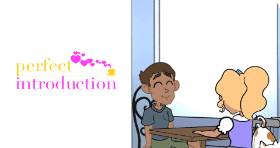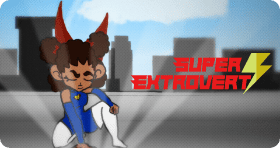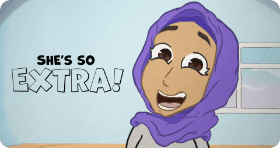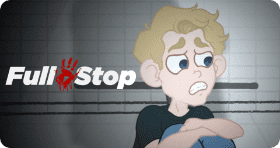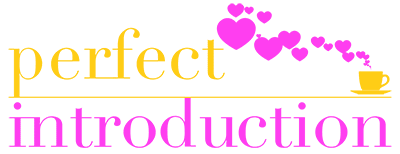
Introduction
Module Overview
Welcome to the Aspire Higher Prep-it and Write! An e-learning module developed to help you prepare and write your best first draft of a personal statement. Alongside the series of 5 activities, each of which will help you prepare and start to write a section of your personal statement, we have developed a personal statement template for you to write your draft onto. At the bottom of this page, under the Additional Resources section, we have a load of useful websites for you to refer to as well as a list of key words to use within each paragraph.
Following the activities there are some tips on how to move from preparation to a full first draft and advice on how to get you to the finished product!
We do not expect you to get the perfect personal statement first time so please do ask your teachers, parents and carers if you need support. You can also use the chat function on our website, and a member of our Aspire Higher Team will be able to support you through the process.
Activity Download
Activity Sheet
To make this module as accessible as possible, we have prepared an editable worksheet containing everything you need to complete the Prep-it & write activities and create a fully formed personal statement.
Click the button below to download your preferred file format and you’re ready to get started!

Your List
-
Film name
Perfect Introductions
Duration
30 words
Themes
Passion, Enthusiasm, Connections
Prepping Your Introduction
The key to a good introduction is making it snappy & focussed. You are telling the reader Why you have chosen this course. So as long as you know that, you’re off to a good start. If you don’t… are you sure you’ve thought this through?
Write / type three headings.
- What are my passions?
- What am I interested in?
- What do I want to know more about?
Your activity sheet contains three headings. Beneath these headings… make some lists relating to the course! They only have to be bullet points, but these will give you a starting point for your introduction.
Once you are happy you’ve thought of all the points you can, take a minute to read back through – make the ones that mean the most to you / feel strongest BOLD (they’re probably the ones at the top).
Before moving on to Activity 2, here’s a quick task to help create a first draft of your introduction.
ACTIVITY 1 – TASK
Using the points you have highlighted in this activity, draft a version of your Introduction. Tell the reader why you’re applying – include your ambitions, as well as what interests you about the subject, the course provider, and higher education. It can be hard to sell yourself but you can use these highlighted points as a basic structure for your introduction. If you are struggling then don’t forget to ask friends, family and teachers for some feedback. What do they most admire about you? And finally don’t forget to make it relevant to the course. The introduction must grab the reader’s attention, so if you are finding it difficult, don’t worry, have a go at the other tasks first and come back to the introduction when you feel more confident.
-
Film name
Super Extrovert
Duration
200 words
Themes
Volunteering, Talent, Interests
Identifying your ‘Super Curricular’ Experience
‘Super Curricular’ is a subject that can cast a pretty wide net! It’s anything you do when you’re not in school that is academic in nature. This could be as in-depth as a free course you have undertaken or as simple as a documentary you watched. You’re just trying to say;
“I am already taking an active interest in the subject area off my own back”.
The wide range of things that fall into this category can make ‘lists’ a long winded way of identifying what to include. Working backwards is a really effective way of identifying the right talking points. Start by writing 2 – 3 things. This section needs to tell the viewer about you (each in a circle).
These circles will each become the centre of a spider diagram – you can now work backwards to find examples of ‘super curricular’ activities that support each message.
Before moving on to Activity 3, here’s a quick task to help you turn one of these Spider diagrams into a usable paragraph for your personal statement.
ACTIVITY 2 – TASK
Practise taking one arm of your spider diagram and turning this into a paragraph for your personal statement. You are demonstrating to the reader why you are suitable for the course. You will use your achievements and experience to provide relevant examples that will show off your strengths.
Activity – Use something you have identified in your spider diagram
Benefit – What transferable skills have you acquired by doing this activity?
Course – How do these skills relate to your course?
-
Film name
Solid Core
Duration
150 words
Themes
Education, Showing Knowledge, Connecting learning to your Goal
Identifying your ‘Core Curricular’ Experience
This section should be the easiest to tackle. You have definitely accumulated this experience as part of attending school, you’re just identifying the most relevant parts of your education to date.
What you’re saying in this section;
“This is what I have done in school to expand my knowledge of the subject”.
Start by writing each of the subjects you have studied (i.e. ‘Business Studies A-Level’) as a heading. Under each heading, write a list of things you did as part of that subject that are relevant to the course you are applying to. These could be books you have read, modules / assignments you enjoyed or even presentations you gave.
Once you have completed this exercise, go back through your lists BOLD any points that you think are particularly strong.
Before moving on to Activity 4, this short task will help you turn one of your strongest points into a usable part of your ‘Core Curricular’ section.
ACTIVITY 3 – TASK
Take one of your subjects most relevant to this field of study and write a paragraph. Highlight what you have learnt and how this knowledge will prepare you for the course. Try to reflect the skills and qualities the University or College value the most, and this should be evident in the course description. The knowledge you have gained might not be an obvious match but it may demonstrate common themes, like problem solving or creativity.
Activity – Select one of the subjects you have studied.
Benefit – What did you learn that is relevant to the course you are applying for?
Course – How do these skills relate to your course? For example, good communications skills are vital for many University courses, especially during group work.
-
Film name
She’s so Extra
Duration
100 words
Themes
Hobbies, Passion, Experience, Transferable Skills
Identifying your ‘Extra Curricular’ Experience
After the academic stuff, this is just everything else that makes up ‘you’. It could be your hobbies, skills you have, activities you enjoy or even a job you have.
What you’re trying to say in this section;
“I have lots of interests, hobbies and skills that have prepared me for and / or compliment the course I want to do”
This could be anything… so ‘headings’ don’t really work. For this one, we will do a Spider Diagram. To start with, draw a circle and write ‘Extra Curricular’ in it. Draw spokes from this centre point for everything you can think of that might be relevant, then spokes from each of these that explain the evidence.
The method above helps you to prepare what you want to include and why you would choose to mention it in one exercise.
Once you’re finished, take a second to review what you have done and highlight the things you feel are strongest / most relevant.
Before moving on to Activity 5, this quick task will help you turn one of your extra curricular activities into a usable paragraph for your personal statement.
ACTIVITY 4 – TASK
This task is about taking the less obvious experience you have gained and demonstrating how it has developed transferable skills. Write a paragraph that takes one of your extracurricular activities and evidence how the experience gained has equipped you with a skill that will be beneficial to you on the course, for example team work.
Activity – Use something you have identified in your spider diagram
Benefit – What transferable skills have you acquired by doing this activity?
Course – How do these skills relate to your course?
-
Film name
Full Stop
Duration
20 words
Themes
Aspirations, Goals, The Future
Prepping your Conclusion
The key to a good personal statement is ending on a high note. Look into the future and let the reader know how the course will benefit you, what your future desires are beyond your studies and why the course will help you get there.
Write / type four headings.
- What do I want to be?
- What knowledge do I want to gain from University?
- What experiences do I want to have at University?
- What will I bring to the course?
Beneath these headings… make lists. These points will form your conclusion.
Once you are happy you’ve thought of all the points you can, take a minute to read back through – try to spot trends, do any of the points you have written here compliment / reinforce a lot of what has come before?
Once you’ve finished, highlight the strongest points and use the task below to create a first draft of your conclusion.
ACTIVITY 5 – TASK
Now you have completed four of the tasks you will have an introduction and three paragraphs, forming a draft of your personal statement. Read back though the activities and look for themes and strong pieces of evidence related to the course. Your concluding paragraph should aim to repeat and reinforce what is the most important and relevant to your application and the course requirements. Don’t forget to show your passion and personality in your conclusion, make you stand out in a good way.
Now… Write It!!
Now that you’ve worked through the 5 activities and their associated tasks, the content for your personal statement is in that document… but you’re not at the end of the module yet! You just need to write it! The tasks in each section have given you a starting point for each area… now it’s up to you to do the rest.
The final page in your worksheet gives you your personal statement structure – you just need to fill in the boxes. Check out some useful tips below to help you get to your first draft!
Recommended for you
Now you have your bullet points, here are a few tips to support your writing.
-
Tip 1 – KEY WORDS
Having a little trouble finding the right words? We thought we would give you a place to start. Click here to download a glossary of key words to use when you’re stuck.
-
Tip 2 – DON’T COPY… OR PASTE!
It’s easy to find statements, phrases or even paragraphs of content online that may seem perfect for your personal statement, but copying these directly could cost you your place at university.
UCAS scans all personal statements for similarities. If yours is flagged it could affect your chances of being offered a place.
This isn’t to say you can’t take inspiration from other work you read, just make sure you use the message… not the literal words!
-
Tip 3 – AVOID CLICHE.
As you refine your personal statement, it should naturally reduce in size, it’s still not time to be worrying about word count though. First of all – let’s make sure your voice is still in there.
It’s easy to fall into the trap of using cliches as you write (especially if you have been looking at templates) so do a pass or two where you check that the language sounds authentic to you.
Some examples of cliches to get you started: ‘Since a young age…’, ‘I am currently studying a BTEC National Diploma in…’ – also, any quote is usually a bad idea, remember, it’s your voice the reader wants to hear!
-
Tip 4 – CHECK YOUR PASSION COMES THROUGH.
When you are trying to tick boxes, it is easy to forget what you are trying to convey. In this case, you are trying to convey that you are a perfect candidate for the course in question because of your passion for the subject and your experience / skill set. Does that still come through?
Don’t be afraid to ask for the opinion of your peers, teachers or family at this point. They know you and will be able to tell you if what you have written feels like it represents you.
-
Tip 5 – TUNE & POLISH.
In this exercise we have provided a guide word count for each section… but personal statements do not have a word count, they have a character count. 4000 to be exact. If you have the word count for each section right, your character count should be close. Make sure you proofread your personal statement a few times for spelling, punctuation and grammar. You want to make the best possible first impression.
Been working through the exercise step by step? If so, congratulations.
Conclusion
We know this says ‘conclusion’ but remember, you’re not finished yet! If you have worked through all of the activities, tasks and utilised some of the tips, you should have a first draft… but that isn’t the end of your personal statement journey.
Students usually write several drafts before using it in their UCAS application. Still feel like more support would be useful? It’s definitely worth asking teachers, parents, carers or friends; they’ll be able to help you make amendments and refine. Don’t forget to look under Additional Resources at the bottom of this page to check out some additional resources!
Remember if you still have more questions you can chat to a member of the Aspire Higher team in our live chat box on the left-hand side of this page. Just leave your question and email address and a member of the team will get back to you. The chat is always operated by real people who are happy to answer any questions you might have.
Lastly congratulations on completing this first step towards university and good luck with the rest of your application!
Like?
We’d love to hear what you thought of this learning resource, any feedback helps us improve.


